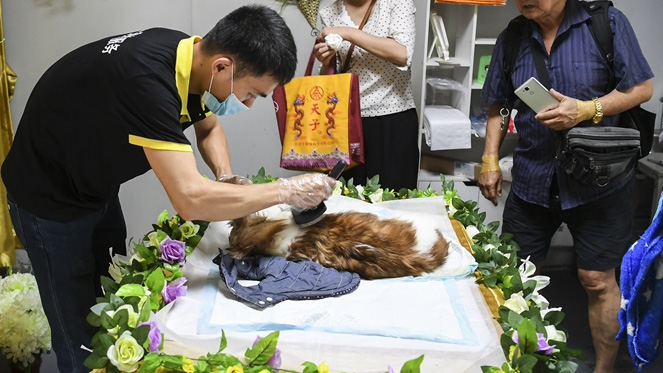When a much-loved pet dies, the sense of loss can be huge and many pet owners want to grieve properly. In China that has turned into a booming market for pet funerals. We spend a day at one lavish funeral to understand what is behind this trend.
Xu Qianwen stands in a quiet room, surrounded by flowers and snacks arranged around a bed at the centre. Incense burns gently in the corner, and soft music fills the space. Despite the tranquil setting, the atmosphere is solemn, as a small coffin rests in the middle of the bed, though it wasn’t made for a human.
On July 13th, Xu’s two-year-old dog, “Luo Luo,” passed away, and the following day, the 22-year-old held a funeral for her faithful companion. The small coffin was specially prepared for her dog. From transportation to the funeral and cremation, everything had been meticulously arranged.
“She wasn’t just a pet, she was family,” Xu says, choking back tears as they well up in her eyes. “I can’t imagine life without her.”
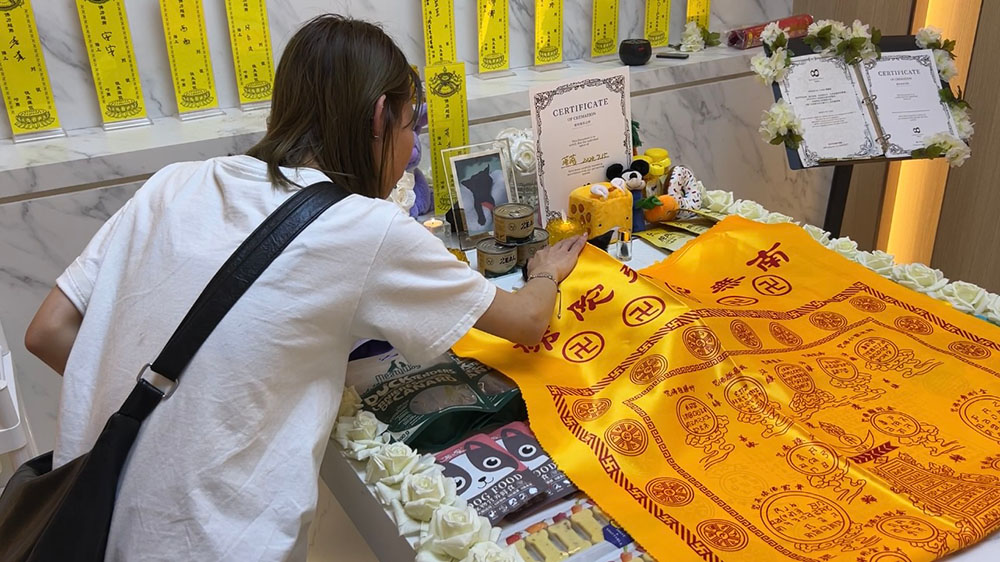
This scene would have been unimaginable in China not too long ago. However, with the country’s economic growth, urbanisation, and the increasing popularity of personalised and customised services, pet funerals have gradually gained traction. Pet owners now seek to memorialise their beloved animals in such a way that reflects a broader shift in how Chinese people view both pets and family, alongside deeper changes in attitudes towards wealth and consumption.
For people like Xu, who lives alone in Hangzhou, her dog Luo Luo was a source of comfort and companionship. “When I first got her, it was mostly because I wanted a pet to keep me company,” she says, wiping her eyes. “But over the past two years, she became my closest friend. Giving her a meaningful farewell is the last thing I can do for her.”
Xu chose a mid-range package that included cremation, a memorial service, and a customised urn, costing around 13,500 RMB (approximately £1,451). For someone who recently graduated from university, in a city where the average monthly salary is 11,879 RMB (about £1,277), this expense represents more than a month’s wages.
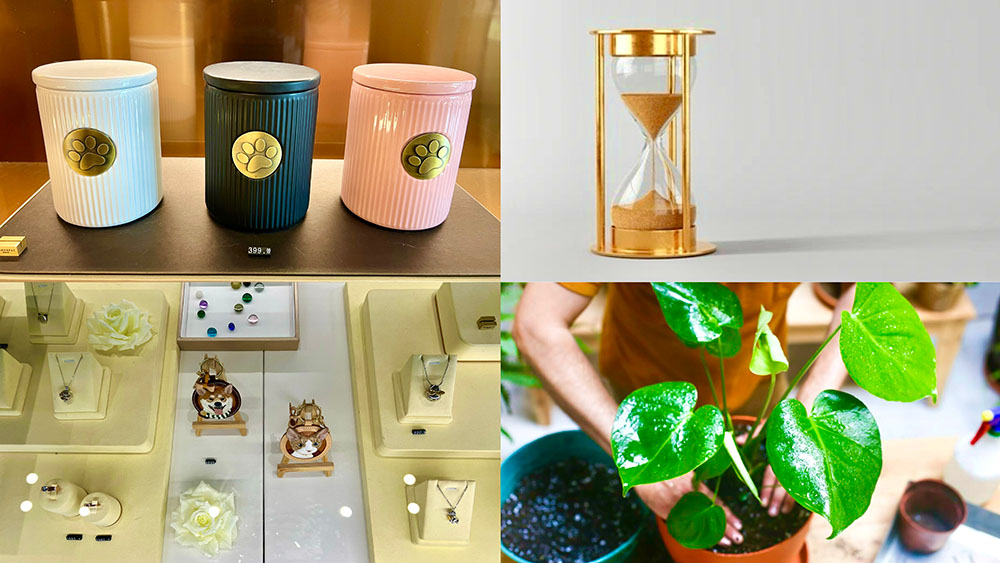
However, the rise of pet funerals has sparked a debate about whether this reflects genuine love and grief or merely conspicuous consumption. Some critics argue that certain services, like custom-made urns and lavish ceremonies, are excessive and wasteful, losing the true meaning behind the practice.
The pet funeral industry in China is undergoing rapid growth. According to data from a Chinese business inquiry app, by the end of 2023, there were over 42,000 businesses related to pet funerals. This equates to roughly 60 businesses in each of China’s 694 cities offering related services. Additionally, more than 26,000 new businesses were registered in 2022, a nearly sixfold increase from the previous year. This rapid growth highlights how the pet funeral industry is in a stage of rapid expansion, with an acceleration rate that far surpasses many traditional industries. This trend reflects a broader cultural shift in how Chinese people view pets.
This shift is particularly evident in urban areas, where young, affluent pet owners are not only willing to pamper their pets but are also spending increasingly large amounts to memorialise them.
We are with Ms. Xu at a pet funeral home in downtown Hangzhou, called “MemorPET.” The owner, Mr Coco, started his pet funeral business a year ago, initially only offering transportation and cremation services. Now, he hosts three to four funerals a day.
Explaining the entire process, Coco says, “First, the deceased pet is placed on a ceremonial bed. The owner writes the pet’s name on a plaque, and the embalmer will then clean the pet one last time. After washing the pet, a small section of fur is shaved from one paw to create a paw print keepsake. A tuft of fur is also preserved in a small bottle for the owner. The memorial service follows, where the embalmer reads a eulogy for the pet, and the owner is given time to say their final goodbyes. Finally, the pet is placed in a box for transportation to the crematorium, where the owner may choose to accompany the pet. After cremation, the ashes are placed in various styles of urns.”
“At first, this was just a side business,” Coco says. “But as more people wanted special, customised ceremonies, we expanded to offer a wider range of services, from simple cremations to elaborate ceremonies complete with eulogies, floral arrangements, and even banquets.”
Coco shows us a dedicated section of the store where pet ashes are stored, and funerals are held. Here, rows of pet memorials are adorned with flowers and small snacks placed beside urns. “It’s about honouring the relationship between the pet and the owner—a bond as deep as any between humans,” he says.
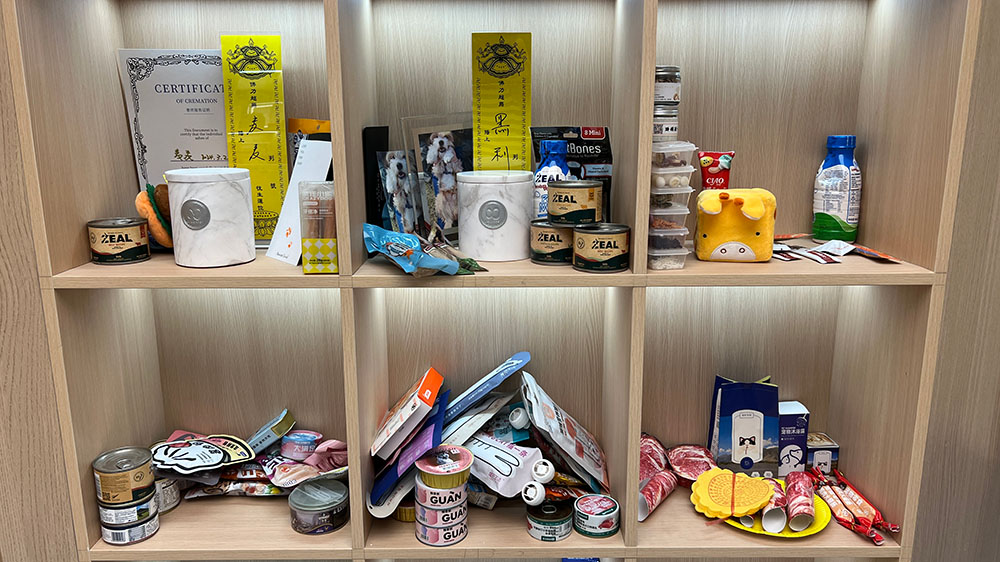
In Yancheng, Ms. Dong Lijun, who also runs a pet funeral business, has seen a surge in demand for these elaborate ceremonies in recent years. “Initially, most people only wanted simple cremation services. Now, they’re asking for everything, including customised urns and lavish ceremonies,” she says. Her most expensive package, which includes a live orchestra, floral arrangements, and a customised tombstone, costs up to 50,000 RMB (approximately £5,376). “This gives people the chance to memorialise their pets in the same way they would a human family member,” Dong explains.

Moreover, the rise of pet funerals reflects changes in Chinese family structures. According to a review article, China’s one-child policy, rapid urbanisation, and shrinking household sizes have weakened traditional family and community structures that once provided emotional support. Many people now turn to pets as their primary source of companionship.
Wang Jiani, the director of a pet hospital in Beijing, says, “With fewer siblings, cousins, or other family members around, pets have filled a significant emotional void. They’re often seen as substitutes for children, and their deaths can cause just as profound a sense of loss.”
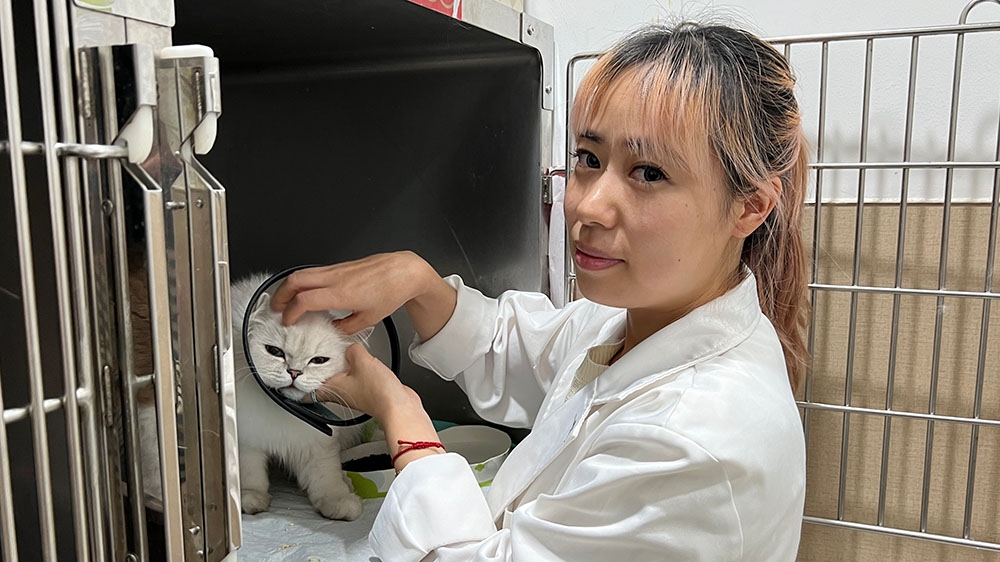
Later, Coco recalls a particularly memorable funeral: “We organised a service for a golden retriever. The family treated it like a full-fledged funeral—four or five relatives attended, along with a photographer. They spent more than 20,000 RMB (around £2,150), but they felt it was worth every penny.”
Reflecting on such high spending, Coco says, “Some people have the means, and they see holding a funeral for their pet, on par with a human’s, as a sign of respect for life and a way to demonstrate their financial status.” Such stories are becoming increasingly common in developed cities like Beijing, Shanghai, and Guangzhou, where the pet industry is thriving.
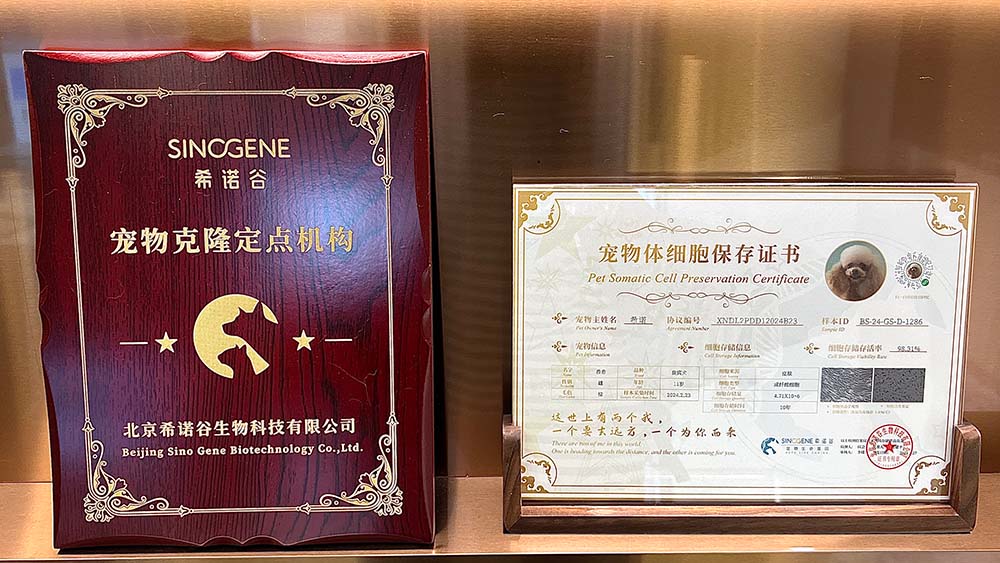
Some view this as a natural expression of grief, while others worry that the commercialisation of pet funerals may be exploiting vulnerable pet owners.
Despite these concerns, the demand for pet funerals continues to grow, raising broader discussions about how economic growth is reshaping cultural practices in China. With rising disposable incomes, more people now have the financial freedom to spend on emotional needs. This shift extends beyond pet funerals, encompassing pet spas, luxury grooming, and even pet weddings. “It’s a reflection of China’s increasing affluence,” says Wang Jiani. “But it also shows how society is placing greater emphasis on emotional well-being and the relationship between humans and pets.”
Indeed, many pet owners find comfort in these ceremonies. For Xu, the funeral for Luo Luo brought her a sense of closure. “It was a way to say goodbye and to show gratitude for the love she gave me over the years,” she says. “I know some people may not understand, but it meant the world to me.”
As the ceremony concluded, Xu placed a picture of Luo Luo next to her urn. “I hope she’s at peace now,” she whispers. “This was the last thing I could do for her.”
China’s growing trend of pet funerals is not just about saying goodbye. It also highlights the deep emotional bonds between humans and their pets. But as the industry continues to develop, striking a balance between meaningful commemoration and ethical responsibility will be crucial. “The future of China’s pet funeral industry will likely see continued growth,” Wang Jiani says. “But whether it can find that delicate balance between genuine care and commercial exploitation remains to be seen.”
